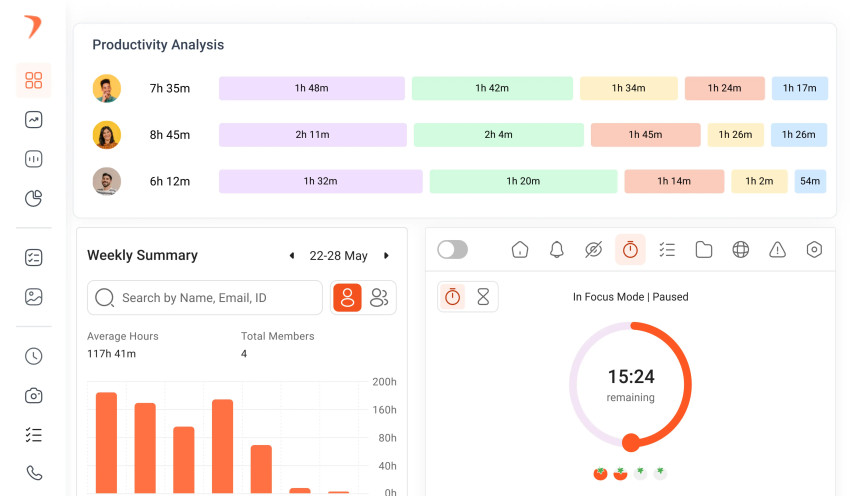
In the dynamic landscape of modern business, effective work management is a cornerstone of success. Companies are constantly seeking innovative solutions to enhance productivity, and one such tool gaining prominence is Employee Time Tracking Software. This blog will guide you on how to leverage this technology to elevate work management within your organization.
Understanding Employee Time Tracking Software
Before delving into its application, let's grasp the fundamentals. Employee Time Tracking Software is a digital solution designed to monitor and record the hours employees spend on tasks and projects. It offers a comprehensive view of time allocation, providing insights that go beyond traditional methods.
Key Features of Employee Time Tracking Software
Real-time Monitoring:
These tools offer real-time tracking capabilities, allowing managers to monitor the progress of tasks as they unfold. This facilitates immediate intervention if deviations from timelines occur.
Project-Specific Tracking:
Employee Time Tracking Software enables the allocation of time to specific projects. This granular approach aids in project management, ensuring that each task receives the necessary attention.
Task Categorization:
Tasks can be categorized based on projects, clients, or types, providing a detailed breakdown of time utilization. This feature is instrumental in identifying patterns and optimizing workflows.
Automated Reporting:
Generate comprehensive reports effortlessly. Automated reporting not only saves time but also ensures accuracy in data representation, aiding in informed decision-making.
Implementing Employee Time Tracking Software for Enhanced Work Management
1. Define Clear Objectives:
Clearly outline the objectives of implementing time tracking software. Whether it's to boost productivity, streamline project management, or analyze resource allocation, having a defined purpose sets the foundation.
2. Select the Right Software:
Choose a time tracking software that aligns with your organization's needs. Consider factors such as ease of use, scalability, and integration capabilities with existing tools.
3. Customize for Your Workflow:
Tailor the software to match your workflow. Define projects, tasks, and categories that resonate with your organization's structure. A customized setup ensures seamless integration into daily operations.
4. Employee Training:
Provide comprehensive training to employees on using the time tracking software. Address any concerns and emphasize the benefits, fostering a positive approach to its adoption.
5. Encourage Transparency:
Promote a culture of transparency. Assure employees that the goal is not micromanagement but rather optimization. Emphasize how accurate time tracking benefits both individual growth and overall organizational success.
6. Regularly Analyze Reports:
Make the most of the generated reports. Regularly analyze them to identify trends, assess project timelines, and understand resource allocation. Use these insights to make informed decisions.
Why Companies Should Embrace Employee Time Tracking Software
1. Boosts Productivity:
By providing a clear overview of time spent on tasks, employees can identify and eliminate time-wasting activities, leading to increased productivity.
2. Enhances Project Management:
Project-specific tracking ensures that each project is allocated the necessary resources and that timelines are adhered to consistently.
3. Improves Resource Allocation:
Understanding how employees spend their time enables better resource allocation, ensuring that each team member's skills are utilized optimally.
4. Facilitates Informed Decision-Making:
Accurate data from time tracking software empowers leaders to make informed decisions about workflow optimization, project prioritization, and resource allocation.
5. Fosters Accountability:
The transparency introduced by time tracking fosters a sense of accountability among employees, driving them to efficiently manage their time.
Conclusion: A Strategic Investment in Productivity
In conclusion, implementing Employee Time Tracking Software is a strategic investment in enhancing work management for companies. By leveraging its features and fostering a culture of transparency, organizations can achieve greater productivity, improved project management, and informed decision-making.
Embrace the future of work management with Employee Time Tracking Software, and witness the positive transformation it brings to your organization!




